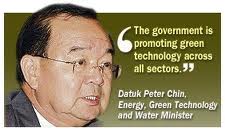 The Renewable Energy Bill 2010 was introduced in Parliament by the Hon. Minister of Energy, Green Technology and Water on 15 December 2010 for its first reading. This bill was drafted to become the stated regulatory framework to achieve the government’s Renewable Energy (RE) Policy vision, which is stated as “Enhancing the utilisation of indigenous renewable energy resources to contribute towards National electricity supply security and sustainable socio-economic development.”
The Renewable Energy Bill 2010 was introduced in Parliament by the Hon. Minister of Energy, Green Technology and Water on 15 December 2010 for its first reading. This bill was drafted to become the stated regulatory framework to achieve the government’s Renewable Energy (RE) Policy vision, which is stated as “Enhancing the utilisation of indigenous renewable energy resources to contribute towards National electricity supply security and sustainable socio-economic development.”
It is commendable that the Bill attempts to create a predictable regulatory framework including grid integration. However, there are some shortcomings in the Bill that need further scrutiny. This is an important Bill having far fetching consequences because it involves public funding for long-term contracts the government will be engaging with the private sector. The fund is expected to be raised through higher electricity rates to the public.
The most glaring shortcoming is that the Renewable Energy Bill has not set efficiency standards for harnessing renewable energy. This is a fundamental requirement because renewable energy must meet certain objectives such as environmental sustainability and energy security through diversity. The reason that RE low efficiency is not acceptable is because then it does not contribute to net carbon footprint reduction and therefore does not comply with the duty to contribute towards environmental sustainability, in particular Climate Change. The Renewable Energy Bill has overlooked this fundamental premise of why the world is pursuing RE with such vigour.
A survey of countries which offer public subsidy to encourage renewable energy generation reveals that in most countries the subsidy is mandatorily tied to minimum efficiency standards. For example, in the European Union, for any public subsidy to apply, efficiency for harnessing renewable energy from biomass and biogas are enforced through the concept of “CHP Quality” where progressively higher tariffs are offered as the efficiency increases above a minimum threshold where the minimum threshold efficiency itself is set high to begin with.
The Renewable Energy Bill 2010 offers a bonus for efficiency levels reaching 14% and above. This is a very low figure. A further limitation is that, the Sustainable Energy Development Authority (SEDA) within their authority will not be legally able to impose efficiency criteria, because stating an efficiency figure in the Bill becomes an implied term that efficiencies below 14% are allowed.
If one reads through the Bill, it appears to be a hastily assembled copy and paste document from some assorted sources without much thought given to local situation. We are to seek our own tailor-made solutions after taking into account our resources, conditions and needs.
This important regulatory framework should be structured to promote and prioritise renewable energy technology options that are appropriate for the local state of affairs. Before a renewable energy regulation is embarked upon a good understanding and knowledge about the potential and resource availability of each technology should have been studied. After all we have had about 9 years since the Energy Policy in the 8th Malaysia Plan, which introduced renewable energy for the first time. This should be ample time to grasp the state of affairs and requirements and sufficient opportunity for this purpose.
The Bill appears to be satisfactory perhaps for solar photovoltaic, where efficiency is not much of an issue. It is easy to implement solar photovoltaic systems where no special knowledge or skills is required; it can be considered a technician’s job whether small or large capacity is involved. Unfortunately, it’s not the same with other forms of renewable energy, especially where biomass and biogas are concerned, which require some innovative thinking for its success.
Some questions to ponder are:
- Exactly which biomass and biogas are we targeting?
- Which geographic regions are we considering?
- What is hindering its development?
- What is required to develop these resources?
- What are the special issues with these resources?
Answers to the above must be known with reasonable accuracy and certainty before any policy can be formulated.
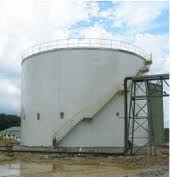 The government is heading in the right direction, but it seems to have stopped short. We are aiming for environmental sustainability by reducing harmful greenhouse gases and enhancing energy security because we want independence from fossil fuel and diversification in fuel supplies. Solar energy may be in abundance but its harnessing technology is not affordable at the present time. On the other hand biomass and biogas are scarce resources in the renewable energy mix but there are dire urgent needs to utilise them for several pressing reasons, main reason being if biomass and biogas are left unutilised they will emit enormous amounts of lethal greenhouse gas, far more than when fossil fuel is burned, affecting Climate Change even more adversely.
The government is heading in the right direction, but it seems to have stopped short. We are aiming for environmental sustainability by reducing harmful greenhouse gases and enhancing energy security because we want independence from fossil fuel and diversification in fuel supplies. Solar energy may be in abundance but its harnessing technology is not affordable at the present time. On the other hand biomass and biogas are scarce resources in the renewable energy mix but there are dire urgent needs to utilise them for several pressing reasons, main reason being if biomass and biogas are left unutilised they will emit enormous amounts of lethal greenhouse gas, far more than when fossil fuel is burned, affecting Climate Change even more adversely.
Biomass and biogas can offer carbon emission reduction when they displace fossil fuels, but only if they are used efficiently and this is established science. Renewable energy regulations must reflect the scarcity of the resource and findings of the science. Unbelievably, the Renewable Energy Bill sets no minimum efficiency for biomass energy resource. Unless it is corrected early we are going to be saddled with 16 to 21 year contracts with the damaging mistake.
Shockingly, the new regulations give private biomass energy plants special status to receive public subsidy for their energy under the “community feed-in tariff” without attention to efficiency.
 In Malaysia, biomass and biogas are predominantly from the Oil Palm industry. Other sources of biomass are timber industries, rice mills, and sugar mills but these are a small portion, whereas municipal solid waste needs special treatment.
In Malaysia, biomass and biogas are predominantly from the Oil Palm industry. Other sources of biomass are timber industries, rice mills, and sugar mills but these are a small portion, whereas municipal solid waste needs special treatment.
The Oil Palm industry has been for quite sometime under severe pressure to move the industry towards environmental sustainability. This pressure comes from several fronts, one from their own conscience of Corporate Social Responsibility (CSR) and the other from Western Environmental NGO’s which continue to pursue relentless campaigns against unsustainable Oil Palm industry activities.
All these are influencing European Community trade policies. The Americans are pacified for the moment but they are watching us too. In actual fact the industry has the means to reduce carbon footprint by a whopping 30 million tonnes of Carbon Dioxide per year that would contribute significantly towards global environmental sustainability in respect of Climate Change. This amounts to CO2 emission equal to almost half the coal burning in the UK.

The good news is the Oil Palm industry has the capacity to provide up to 2,000 MW of Green Energy to the national power grid and another 4,000 million litres of fuel oil equivalent per year by solid biofuel for industrial heating purpose. However they are unable to exploit it because of the lack of grid access for electricity export and market access for its biofuel. Presently this amount of renewable energy is shamefully left wasted to pollute the environment. In another perspective, 2,000 MW of electricity generating capacity is the capacity of three nuclear power plants that is currently under review by the government.
Funnily enough the Oil Palm industry has never asked for any public subsidy but instead local market access for the excess energy. They need Feed-in-Grid to harness the renewable energy in the biomass and biogas to move the industry forward to environmental sustainability. Only about 25% of the palm oil mills are located within five (5) kilometres from the nearest power grid access point and laying electric cables to carry the power to the grid cost about RM 1 million per kilometre. Presently the conditions imposed for export of electricity to the power grid are too stringent for a process industry. The market for solid biofuel is yet to be established.
As far as the Oil Palm industry is concerned, the present electricity purchase price provided in Renewable Energy Power Purchase Agreement (REPPA) is satisfactory for undertaking investment into efficient energy generation for export. This is because the mills already can have good profits but they are unable to develop it further because of problem with power grid access. The REPPA electricity purchase price is set at 21 sen per kWh, which is about the present displaced cost to the distribution licensee.
The conditions dictated for export of electricity to the power grid under the REPPA are too stringent for a process industry. It is very difficult for a process industry to meet the conditions of a dedicated electricity generating utility. Therefore, whatever Feed-in-Tariff is offered, the industry’s quest or the country’s desire to push the renewable energy agenda cannot be accomplished, unless the power grid infrastructure and the appropriate conditions of supply-intake are ready.
 We should take note that if ever there is some screaming for higher tariff, they are not the palm oil millers but corporate entrepreneurs who intend to purchase the Empty Fruit Bunches (EFB) from the mills and set up cheap low efficiency power plants. These operators are in desperate need for higher tariff subsidy to show their investment as viable. These power plants are run typically at about 14 – 17 % efficiency and at these low efficiencies the electricity produced is not considered renewable energy as the operation does not reach net carbon footprint reduction, neither does it meet the vision for “enhancing the utilisation of indigenous renewable energy resources”!
We should take note that if ever there is some screaming for higher tariff, they are not the palm oil millers but corporate entrepreneurs who intend to purchase the Empty Fruit Bunches (EFB) from the mills and set up cheap low efficiency power plants. These operators are in desperate need for higher tariff subsidy to show their investment as viable. These power plants are run typically at about 14 – 17 % efficiency and at these low efficiencies the electricity produced is not considered renewable energy as the operation does not reach net carbon footprint reduction, neither does it meet the vision for “enhancing the utilisation of indigenous renewable energy resources”!
Further, the investments are not viable without high purchase price and soft loans. It is therefore unconscionable to tax the public to subsidise for someone’s inefficiency! In contrast, energy produced at the mills will be by means of cogeneration at above 80% efficiency. Further, the mills have a greater stake at running the integrated power plants reliably as it has a bearing on their core-business of milling the palm oil fruits. Therefore, a scientifically proven minimum efficiency level for green energy will keep at bay undesired consequences.
Biomass Lessons of the Past not to be Forgotten
We need to revisit our past experience to gain insight into the future.
The United Nations Development Programme (UNDP) and The Global Environment Facility (GEF) came forward in 2002 to support the UNDP/GEF Biomass-Based Power Generation & Combined Heat and Power Plant in Palm Oil Mill Demonstration (Biogen) Project to assist in implementing a high efficiency renewable energy cogeneration plant for the Oil Palm industry with technical assistance and substantial combined funding from UNDP/GEF and the Malaysian Government.
 The project was implemented as the MHES Asia Biomass Power Plant in Negeri Sembilan by the Ministry of Energy, Green Technology and Water through a private project developer. It is to be noted that the project was originally conceived by EPU/UNDP/GEF/National Steering Committee as a high efficiency renewable energy cogeneration (Combined Heat and Power) project specifically to integrate with a palm oil mill to serve as a showcase or demonstration project for the Oil Palm industry in view of the vast amount of biomass available in the industry. International consultants were engaged by UNDP/GEF in drawing up comprehensive terms of reference and project implementation plan in accordance of the original concept for the project. However, it turned out to be a tragedy and a disaster that the project ended up as just a standalone low efficiency empty fruit bunch incineration plant that failed to live up to its purpose. There is no evidence to show that anyone from the Oil Palm industry was consulted on the project. In fact, the National Steering Committee made a decision not to proceed with the Full Scale Model of the standalone EFB project; however this decision was later reversed by UNDP and the Ministry of Energy to proceed with the non-compliant useless plant.
The project was implemented as the MHES Asia Biomass Power Plant in Negeri Sembilan by the Ministry of Energy, Green Technology and Water through a private project developer. It is to be noted that the project was originally conceived by EPU/UNDP/GEF/National Steering Committee as a high efficiency renewable energy cogeneration (Combined Heat and Power) project specifically to integrate with a palm oil mill to serve as a showcase or demonstration project for the Oil Palm industry in view of the vast amount of biomass available in the industry. International consultants were engaged by UNDP/GEF in drawing up comprehensive terms of reference and project implementation plan in accordance of the original concept for the project. However, it turned out to be a tragedy and a disaster that the project ended up as just a standalone low efficiency empty fruit bunch incineration plant that failed to live up to its purpose. There is no evidence to show that anyone from the Oil Palm industry was consulted on the project. In fact, the National Steering Committee made a decision not to proceed with the Full Scale Model of the standalone EFB project; however this decision was later reversed by UNDP and the Ministry of Energy to proceed with the non-compliant useless plant.
It is now reported that the project developer has abandoned after a last drawdown of a government guaranteed loan from a local bank even before completing the commissioning. Why did the UNDP and Ministry of Energy approved the standalone project when the funding was originally allocated to showcase and demonstrate a cogeneration project to the Malaysian Oil Palm industry? How did UNDP an international trusted body get hoodwinked. One wonders whether the Ministry of Energy was under so much pressure to show timely statistics on spending the fund? A minimum efficiency level would have averted such an embarrassing disaster. A recent speculation is whether the bank saddled with bad loans to the MHES Asia Biomass Power Plant will seek Feed-in-Tariff subsidy from the public to package with and sell off an otherwise useless project.
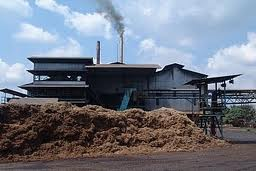 Another case in point is the recently announced Felda-TNB joint venture project in Jengka. This is again a standalone low efficiency empty fruit bunches incineration plant consuming 660,000 tonnes of EFB per year to export 10 MW to the power grid. Its operation at about 16% efficiency will not scientifically qualify it as a renewable energy plant. Neither can the project be justified as a rural electrification program as the electricity is exported to an existing power grid and distribution system. It is quite difficult to comprehend the objective of TNB getting involved in this project as a strategic partner considering they should be more on their guard with their know how and all! Their Japanese joint venture partner had pulled out just before the contract award for the plant construction. The parties involved have been warned of its untenable renewable energy and the menace created to public safety and peace and harmony by the sixty odd round trips by 40-foot trailer lorries having to ply the public road per day transporting the water-laden empty fruit bunches to the power plant. Now, the speculation is rife whether the joint venture partners will seek Feed-in-Tariff subsidy from the public to sustain such a wasteful project.
Another case in point is the recently announced Felda-TNB joint venture project in Jengka. This is again a standalone low efficiency empty fruit bunches incineration plant consuming 660,000 tonnes of EFB per year to export 10 MW to the power grid. Its operation at about 16% efficiency will not scientifically qualify it as a renewable energy plant. Neither can the project be justified as a rural electrification program as the electricity is exported to an existing power grid and distribution system. It is quite difficult to comprehend the objective of TNB getting involved in this project as a strategic partner considering they should be more on their guard with their know how and all! Their Japanese joint venture partner had pulled out just before the contract award for the plant construction. The parties involved have been warned of its untenable renewable energy and the menace created to public safety and peace and harmony by the sixty odd round trips by 40-foot trailer lorries having to ply the public road per day transporting the water-laden empty fruit bunches to the power plant. Now, the speculation is rife whether the joint venture partners will seek Feed-in-Tariff subsidy from the public to sustain such a wasteful project.
There are lot more examples, but only two are quoted here with the intention of showing just how disastrous it can be to all stake holders if the Renewable Energy Act is not well thought out and structured to achieve the desired outcome in the years to come, bearing in mind we are dealing with long-term contracts. Minimum efficiency level is a safety net in regulation to harness renewable energy.
Solar Photovoltaic
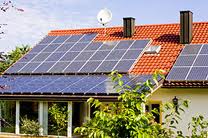 Solar photovoltaic is included as one of the renewable energy technologies promoted in the Renewable Energy Bill 2010. However it is noteworthy that the Economic Transformation Programme (ETP) in its final report published in October 2010 has made reference to solar photovoltaic renewable energy. ETP has rightly reported that solar photovoltaic is not an economical option at the present time and that it may be considered when it becomes cost-effective say in about 6 – 7 years. This is the finding with public consultation.
Solar photovoltaic is included as one of the renewable energy technologies promoted in the Renewable Energy Bill 2010. However it is noteworthy that the Economic Transformation Programme (ETP) in its final report published in October 2010 has made reference to solar photovoltaic renewable energy. ETP has rightly reported that solar photovoltaic is not an economical option at the present time and that it may be considered when it becomes cost-effective say in about 6 – 7 years. This is the finding with public consultation.
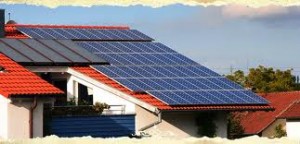
The ETP Laboratories, where the Ministry of Energy, Green Technology and Water participated, with public consultation input identified that based on analysis of costs and benefits solar PV may become a viable option in about 2017 or 2018 when the cost comes down and however, that skills and learning need to be built in the form of small amounts of solar generation leveraging on the proposed feed-in-tariff mechanism. The Malaysia Building Integrated Photovoltaic (MBIPV) projects funded by EU since year 2005 should have given ample learning opportunities for building integrated photovoltaic designs, installations and operation. Therefore, the further learning leveraging the feed-in-tariff should not be directed to photovoltaic technology of solar energy installation (not roof top, building integrated, solar farm or any other) unless there is a specific special feature in integrating into a Malaysian environment with tremendous potential identified for further learning. Almost zero technology is involved in the present solar PV installation and operation. Public funding should be utilised prudently and not for an individual’s learning experience.
It must be mentioned that in eight EU countries, the uptake for solar PV installation was so rapid that their Feed-in-Tariff law needed to be suspended prematurely. The International Energy Agency (IEA) has recently reported that uptake is slow around the globe for lack of encouragement apart from the stated eight EU countries.

Another way of looking at public subsidy for renewable energy is that the promoted technology should attain grid parity within no longer than 7 – 10 years. For instance, Thailand’s renewable energy subsidy contact is for a period of 7 – 10 year depending on the technology. We are generous in offering 16 – 21 year contracts and therefore it is prudent that we promote technologies that have the potential to at least reach grid parity in a shorter time of 7 – 10 years. We do not want to see promoted technologies not survive long-term without aid or government backing.
It is therefore prudent for the Hon. Minister to forestall bringing into operation the provision relating to solar photovoltaic technology in the Bill until the feed-in-tariff has digressed to about 50 sen per kWh say, by 2017.
A solar thermal electric project for purposes of research, for instance should be considered, but unfortunately this technology is not one included in the Renewable Energy Bill.
Effort should be put in where innovative thinking is required and measure the success in that endeavour where the minds of engineers and scientists are a necessary input for success.
Small Hydro
 It is commendable that the Renewable Energy Bill 2010 has considered small hydro for renewable energy promotion through public subsidy.
It is commendable that the Renewable Energy Bill 2010 has considered small hydro for renewable energy promotion through public subsidy.
However, one thing that draws attention is whether a 30 MW capacity hydro plant stated in the schedule of the Bill is a small hydro plant that requires public subsidy to promote it. TNB has built and been operating about 50 mini hydro plants of about 1 MW capacity. In Thailand incentives are given to develop only hydro electricity plants not more than 200 kW (yes 0.2 MW).

It appears that Feed-in-Tariff subsidy in the Bill is structured to finance the development of hydro electricity plant and the power transmission grid to carry the power produced to the nearest TNB substation.
Further, it is not clear from reading the Bill whether the Feed-in-Tariff subsidy is meant to develop new hydro plants or extends even to operating existing mini hydro plants.
Renewable Energy for Heating
The government in the 8th Malaysia Plan when proposing 5% renewable energy mix did not restrict to electrical energy alone and therefore due consideration should be given to heating energy, that requires burning millions of tonnes of fuel oil. This is an even bigger potential to reduce carbon footprint and mitigate global warming. The government should be committed to developing biofuels infrastructure and production capacity to serve domestic industrial heating needs to go hand in hand with cogeneration. This will enable biomass and biogas to be extensively exploited on a commercial scale for electricity production and heating to replace fossil fuel. It takes concerted and sustained effort.
Solar Water Heating for Homes and Commercial Buildings
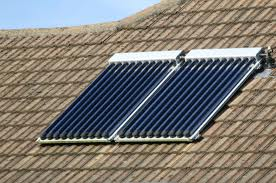 Electricity consumption for home water heating using a premium energy source for heating is a present day transgression where there is an alternative. The housing ministry can make it a requirement for housing developers to install solar water heater as one of the mandatory facility. Almost every home has an electric hot water heater. We can look into implementing solar hot water heating systems on a large scale as a priority until solar PV gets affordable in 2018.
Electricity consumption for home water heating using a premium energy source for heating is a present day transgression where there is an alternative. The housing ministry can make it a requirement for housing developers to install solar water heater as one of the mandatory facility. Almost every home has an electric hot water heater. We can look into implementing solar hot water heating systems on a large scale as a priority until solar PV gets affordable in 2018.
Conclusion
It is judicious upon the Minister to indicate the potential plants (palm oil mills, industrial cogeneration plants, rice mills, timber industries, sugar mills, small hydro and future solar energy plants) that are identified to be developed under various technologies using the Renewable Energy Bill Feed-in-Tariff subsidy scheme. The power grid development master plan with grid route indicated to harvest the power from the distributed generation should also be revealed for public consultation. With the above information the public will be inspired to appreciate what they are going to pay for and participate whole-heartedly in the promotion of renewable energy.
Power grid access should be made available to the renewable energy sources identified and the terms of the supply condition should be reasonable for a process industry. One way to solve this issue is to introduce the concept of “Renewable Obligation”, very successful in the UK, where an obligation is imposed on distribution licensee to source a specified and annually increasing proportion of their electricity sales from renewable sources, or pay a penalty, in which case the distribution licensee will be motivated to go to the renewable energy supplier with amenable supply conditions.
Efficiency of operation for the various renewable energy technologies must be a mandatory term embedded in the Renewable Energy Act.
The Renewable Energy Act will have far fetching consequences and therefore public participation is vital for a sense of ownership and its success!
Any technology that does not project grid parity within a period of 7-10 years should not be allowed public subsidy and therefore the provision should not be allowed to come into operation. This goes to the objective of the Feed-in-Tariff to jump start a technology for skills and learning purposes until the cost come down to affordable level. If necessary, special fund can be allocated by the government for skills and learning purposes.
The development of a power grid to harvest renewable energy in manner of distributed generation in the country due to future trend should be taken as a separate exercise by the government rather than through the Feed-in-Tariff subsidy scheme. Otherwise this could end up as unsystematic power grid development without a co-ordinated scheme.
Final word: Withdraw the Bill! It should be taken back to the drawing board where the properly constituted dedicated personnel of SEDA should be allowed to formulate the Renewable Energy Bill, subsequently table it for public consultation and only then submit for Parliament’s consideration.
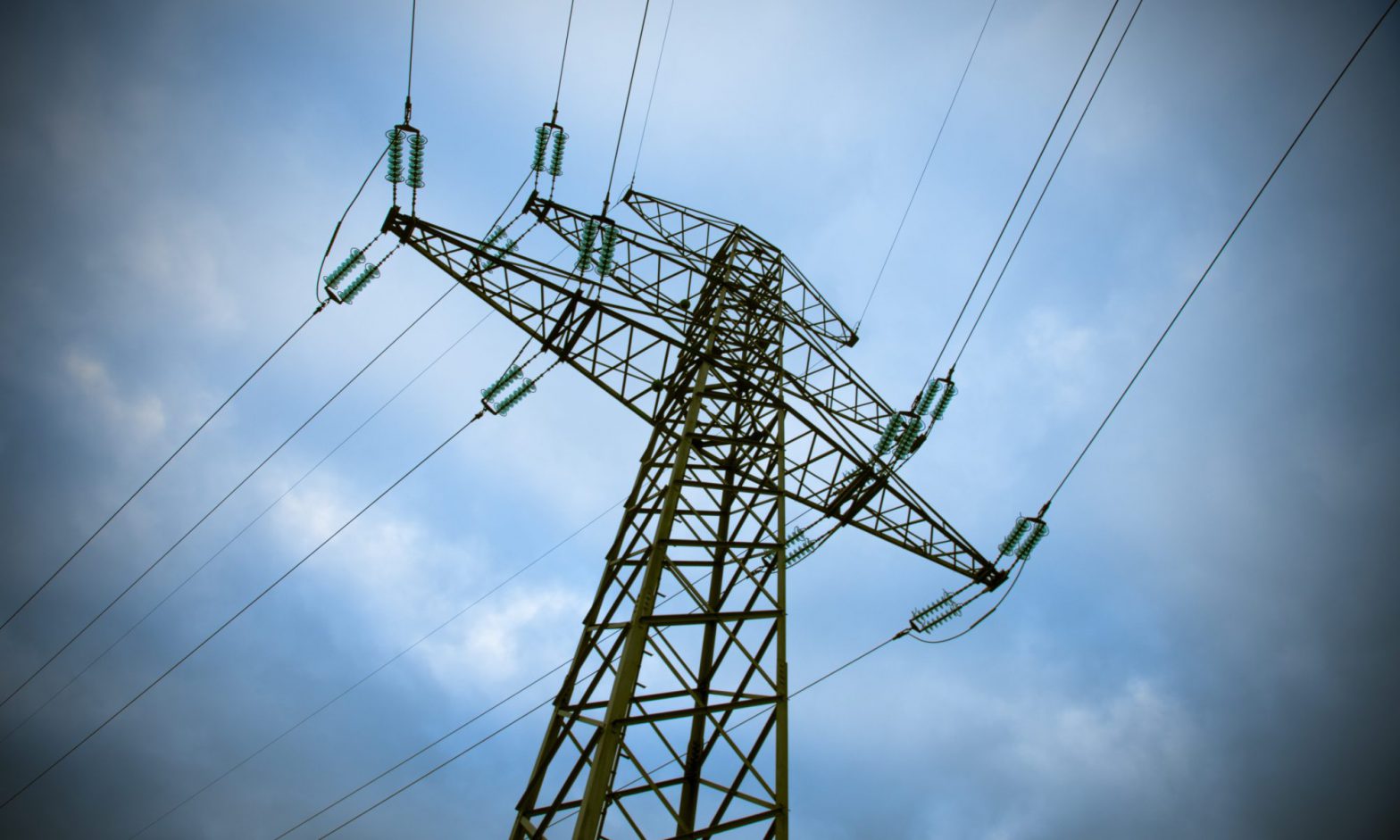
11 replies on “Renewable Energy Bill 2010 Misses the Mark by not setting Efficiency Standards for Harnessing Renewable Energy!”
A very comprehensive and insightful analysis of the Renewal Energy Bill. Thank you.
perhaps the govt was merely providing kickstart to the whole RE venture. Maybe after a few years down the road when more players are getting in the cap will be introduced?
FiT should be such that it should give only a fair IRR which is norm to the industry and not a windfall profit for some big players to participate with the sole intention of making a killing.
If the Malaysian Government wants to be transparent in their approach to the RE bill, they should make it mandatory for such projects to be classified and registered as a Clean Development Mechanism project under the UNFCC. It would then come under the scrutiny of the international body and conform to the Kyoto Protocol. Otherwise it would be free for all.
In any Renewable Energy project all resources should be used resourcefully and there should not be any waste. Most of the biomass RE projects, unless it is a CHP plant, lots of energy will not be used resourcefully.
As for the size of the projects, any project with an export capacity of more than 5 to 10 MW should not be considered as a small scale project, depending on the type of resources used. All hydro power plant projects, whatever the size may be should conform to the “Convention of Dams.”
As for the duration, it should take the lead from the Kyoto Protocol, either a 3 x 7 years period, with renewal application conforming to the condition at the time of renewal or a single 10 year period.
A very insightful analysis. However will be obliged if you can provide the following clarifications ;
1.What is the actual displaced cost of the grid without subsidies? In Pemandu’s assessment, the current electricity generation cost is heavily subsidised i.e. especially on gas & diesel. In actual fact the proposed FiTs are actually lower than the current actual grid cost.
2.The FiT is a fixed tariff regardless of the location. The current scenario however is “generation cost” in Sabah is actually higher than Peninsular & Sarawak. What’s your view on this?
3.You have a very salient point on the efficiency issue. However, you have not provided indicatives of what would be a reasonable efficiency target if 14 % is not good enough. I would certainly support the suggestion that a CHP Biomass plant will certainly be a more efficient approach.
Thanks
The FiTs proposed in the Renewable Energy Bill 2010 are said to be based on financial Return on Investment (ROI) with a reasonable profit (not excessive) to act as incentive to spur the growth of renewable energy and it has nothing to do with displacement cost at the beginning. Therefore, it does not matter if the FiTs are actually lower than the current actual grid cost. In addition, the Bill provides that upon the applicable displacement cost (here I read as subsidised cost) reaching the FiT of a feed-in approval holder (“FIAH”), i.e. upon reaching grid parity, the FIAH will be paid the prevailing displacement cost for the remaining duration of the effective period. This provision is a safety factor for the FIAH to meet his prevailing generation costs in the long term contract. I think the rational for the above two provisions makes good sense for all parties. A discrepancy may arise with the displacement cost, for example grid parity could be earlier in Sabah if the displacement cost (subsidised) in Sabah is higher than in Peninsular Malaysia in the future. The government determines the local energy cost taking into consideration many economic factors.
For biomass and biogas fuel resources, Combined Heat and Power technology is encouraged in almost all countries, because the CHP technology can achieve up to 90% overall (power + heat) efficiency in utilising the renewable energy content in these fuels. Pure electricity generation is discouraged because of its low efficiency, but for the foolhardy, Europe still provides an efficiency level to qualify for subsidies. For biomass fuels, EU sets a target of 27.02% through its “CHP Quality” concept to qualify for grid connection with a minimum subsidy. As an indicative figure for Malaysia, an efficiency level of 27% for net electricity output to grid based on gross calorific value of the biomass fuel is achievable with a simple power plant. This is almost double the electricity export when compared to the bonus efficiency level of 14% provided in the RE Bill. The Renewable Energy Bill 2010 does not impose a minimum efficiency level.
The electricity displacement costs declared by the government for Peninsular Malaysia for the year 2011 are:
– RM 0.2047 / kWh for medium voltage point of connection and
– RM 0.3131 / kWh for low voltage point of connection (applicable only for residential building integrated Solar PV systems).
There has been no indication of the unsubsidised costs.
SESB has stated that in Sabah for the year 2010 the electricity generation costs were:
– RM 0.4370 / kWh without subsidy
– RM 0.3230 / kWh with subsidy
how about “wind energy” and “energy recovery & savings”?
Hello,
I agree with your analysis. I just wonder why wind energy is not considered in the bill. Many if not most consider wind turbine is not be feasible in Malaysia. This is not based on comprehensive study. PERNEC which is a GLC has started a unit that sells wind turbine manufactured in Taiwan. The key point in the Taiwan Technology is that it can harness energy at low wind speed where its cut-in speed is about 1.5 to 2 m/s. Most other commercial wind turbines cut-in speed is about 3-4 m/s and thereby producing little energy in Malaysia as most of the times the wind is below 3 m/s.
The maximum theoretical power that can be extracted from a free unobstructed wind stream by an ideal wind rotor is governed by the Betz’s formula.
Pmax = function (ρ * V^3 * S);
ρ: air density
V: upstream wind speed
S: swept rotor area
A performance coefficient Cp must be applied to the above ideal power for a real rotor in a practical environment with interferences.
In Europe, for example, the annual mean wind speed is more than 8 m/s at the hub height (80m typical). When we take our annual mean wind speed of 2.5 m/s, the theoretical maximum wind energy output compared to in Europe is (2.5/8)^3 = 0.03. Considering a better performance coefficient Cp at lower speeds, we can expect about 15% of the energy output of a similar wind turbine operating in Europe. It is generally considered that at present energy prices and wind turbine costs it is not economical (Return on Investment – ROI ) to operate a modern wind turbine below an annual mean wind speed of 5 m/s.
You are referring to cut-in wind speed, i.e. the minimum wind speed required to rotate the wind turbine overcoming its inherent resistance. A design with a low cut-in wind speed only helps to get the turbine to rotate; however, when a substantial load is applied it cannot sustain its rotation and will begin to stall. A wind turbine with a low cut-in speed design operating at such low wind speed areas may help only in special applications. Noise and public safety are important factors for locating wind turbines in residential areas.
The Renewable Energy Bill 2010 did not consider wind energy for these reasons, I presumption.
Hello,
Your attempt to rationalise Renewable Energy Bill 2010 weakness with reference to the wind turbine generator (WTG) is a result of poor understanding about grid-connected renewable energy technology. The Bill is referring to the feed-in tariff, which is meant for grid-connected resources and not stand alone!
Once you are connected to the grid, you are exporting to the grid and not directly taking any local load. It is just the same like the grid connected PV, the grid supplies the load, while the PV export energy to the grid. Therefore the argument of substantial load causing WTG to stall in a grid-connected situation is non-existent.
A study carried out by using First look software ( world-class energy prospecting software, you can find information about it in the internet), found that there are many places of good wind site in Malaysia. One of them is in Kudat Sabah and another in Langkawi. The Langkawi site is not a surprise, considering that EGAT has successfully installed 150kW WTG and connect it to the grid in Phuket which is not that far from Langkawi. Langkawi and Phuket are exposed to similar wind conditions.
Department of energy USA, is investing in low speed wind speed research and has got some successes. In many ways wind technology is so much better and superior than PV. I have not heard of any sound technical basis of not including this in the bill.
I would think it is definitely a great move from Malaysian government to make our country greener and cleaner. However, I am still waiting for the detail of implementation or guideline from the government. Let’s say I am a resident interested in installing renewable energy devices to contribute to Malaysian renewable energy ambition. My major concern is the risk due to the readiness of grid infrastructure to take such home-made electricity. I may be also interested to know the amount of investment and its return period. I would suggest that the government can provide some kind of quick calculation sheet on the official sheet (like mortgage calculation) providing public some approximations regarding the home installation of such devices. I do hope we will have a nuclear-free Malaysia for good.
Dear EnergyWise,
I’m sorry to be very late with these comments which are based on the recent commencement of the implementation of the FiT (Feed-in-Tariff) mechanism. I make these comments in the interests of the Raakyat as the FiT mechanism is set to create “gross social injustice” by burdening electricity consumers with a tariff levy burden to create windfall profits for a new batch of PV IPPs.
Your main article has correctly pointed out that promotion of RE, even with “subsidised” FiT rates is appropriate for Malaysia to adopt. It also correctly, and wisely, repeats the ETP’s EPP 10 for solar power development and cautions against being too “gung-ho” over large scale PV power plant (PVPP, or PV Farm) development as they are not economicallly viable today.
However, the implementation of the FiT mechanism to promote RE has now apparently approved the FiT rates for PV for the PVPPs which the PEMANDU led EPP 10 specifically discouraged till about 2017 or later, when they can be developed at grid parity rates.
These actions perpetuate social injustice (Robin Hood in reverse) to burden the electricity consumers with a “so-called” 1% tariff levy to support the FiT funding for promoting RE, including the PVPPs mentioned in PEMANDU’s EPP 10. The proposed levy will be higher (as much as 3%) as has been presented in KeTTHA/MBIPV presentations over the past year (FiT Updates on 27 January 2011 and Renewable Energy Bill & SEDA Bill on 16th March 2011).
It must be noted that the FiT rates for PV are scheduled to be paid for 21 years and the developers for the PV Farms can include foreign investors with up to 49% equity holdings.
I am not against RE development but am strongly against the creation of PV IPPs who expect the electricity consumers to make their projects viable through getting FiT rates which were never proposed under the PEMANDU led ETP’s EPP 10. In fact, the same arguement applies to the other (roof top) PV systems as the solar FiT rates were apparently set at system prices for 2009, which have virtually “collapsed” since then. Similar Fit rates in Germany (the example Malaysia used) have fallen by roughly 30% in the last 2 years.
I hope this comment will see print in your comments and I also hope that you may wish to comment on the subject in your editorial role.
Thank you & cheers,
Lal (11/12/11).